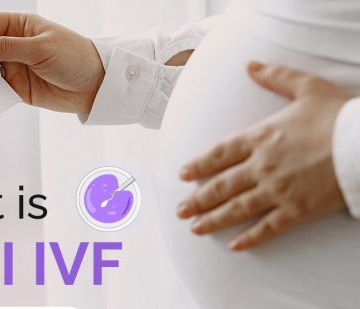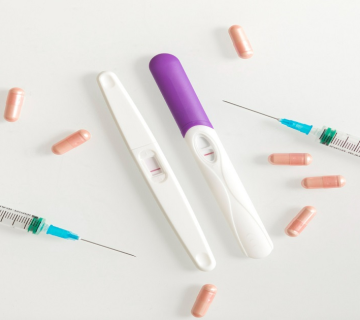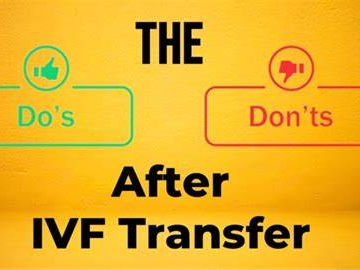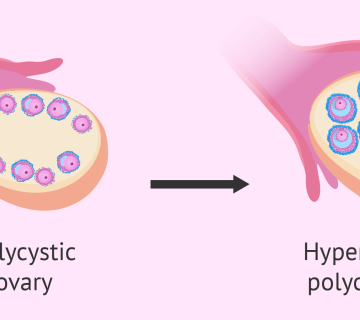
IVF Needles – Your Guide to Understanding and Navigating the Process
In vitro fertilization (IVF) is an incredible journey that helps many people build the families they’ve always dreamed of. If you’re starting this process, you’ve probably heard about the needles involved—and that might feel a little overwhelming. Don’t worry! This guide is here to walk you through everything about IVF needles in a way that’s easy to understand, supportive, and packed with practical tips. We’ll cover what they are, how they’re used, how to handle them, and even the latest breakthroughs that might make the experience better for you. By the end, you’ll feel more prepared and confident about this key part of IVF.
Let’s dive in and explore the world of IVF needles together!
What Are IVF Needles and Why Do They Matter?
IVF needles are special tools doctors use to make the IVF process work. They’re not just random needles—they’re designed for specific jobs, like giving you medicine to grow eggs or collecting those eggs later on. Think of them as the behind-the-scenes helpers that keep everything moving smoothly.
Here’s why they’re so important:
-
- Hormone shots: These needles deliver medicines that tell your ovaries to make more eggs than usual.
-
- Egg pickup: A bigger needle grabs the eggs from your ovaries when they’re ready.
-
- Embryo drop-off: A super-thin tube (like a tiny needle) places the embryos into your uterus.
Without these tools, IVF wouldn’t happen. They’re small but mighty, and understanding them can take away some of the mystery.
“Needles are the unsung heroes of IVF. They make the entire process possible, from stimulating egg production to transferring embryos.” — Dr. Orion Nightingale, Reproductive Endocrinologist
The Different Types of IVF Needles
Not all IVF needles are the same—they come in different shapes and sizes depending on what they’re used for. Let’s break them down so you know what to expect.
1. Hormone Injection Needles
-
- What they do: These little needles deliver hormone meds to kickstart your ovaries.
-
- Size: They’re tiny—usually 25 to 30 gauge. (Fun fact: the higher the gauge number, the smaller the needle!)
-
- How you use them: You’ll inject yourself in your belly or thigh every day for about 10-14 days.
2. Egg Retrieval Needles
-
- What they do: These grab the eggs from your ovaries once they’re ready.
-
- Size: Bigger than injection needles—around 16-17 gauge—since they need to reach inside your body.
-
- How they’re used: A doctor guides this needle with an ultrasound during a quick procedure while you’re snoozing under sedation.
3. Embryo Transfer Catheters
-
- What they do: These carry your embryos into your uterus.
-
- Size: Not a classic needle—more like a soft, thin tube with a needle-like tip.
-
- How they’re used: The doctor slides it through your cervix super gently. No sedation needed!
Quick Comparison Table
| Needle Type | Size (Gauge) | Job | How It Feels |
|---|---|---|---|
| Hormone Injection | 25-30 | Gives you medicine | Like a quick pinch |
| Egg Retrieval | 16-17 | Collects eggs | You’re asleep—no pain! |
| Embryo Transfer Catheter | N/A | Places embryos | Barely noticeable |
Knowing the differences can help you picture what’s coming and feel less nervous about each step.
How IVF Needles Work Step by Step
The IVF process has a few stages, and needles play a starring role in most of them. Let’s walk through how they’re used so you can see the big picture.
Step 1: Ovarian Stimulation (Hormone Shots)
-
- What’s happening: You’ll give yourself shots every day to help your ovaries grow lots of eggs.
-
- How it works: Grab a small needle, fill it with medicine, and inject it into your belly or thigh. It takes just a few seconds!
-
- How long: About 10-14 days, depending on how your body responds.
-
- Tip: Your clinic will teach you how to do this—it’s easier than it sounds.
Step 2: Egg Retrieval
-
- What’s happening: Once your eggs are ready, a doctor collects them.
-
- How it works: You’ll be under light sedation (like a nap), and the doctor uses an ultrasound to guide a needle through your vaginal wall to your ovaries. It sucks out the eggs one by one.
-
- How long: Around 20-30 minutes total.
-
- Tip: You won’t feel a thing during it, but you might have mild cramps after.
Step 3: Embryo Transfer
-
- What’s happening: Your fertilized embryos go into your uterus.
-
- How it works: The doctor uses a soft catheter to slide the embryos through your cervix. It’s quick and usually painless—like a gentle nudge.
-
- How long: Just 5-10 minutes.
-
- Tip: A full bladder helps the doctor see better, so drink water beforehand!
Seeing how each step flows can make the whole process feel less like a mystery and more like a plan you’re ready for.
Are IVF Needles Safe? Here’s What You Need to Know
Safety is a huge deal in IVF, and clinics take it seriously. Here’s how they keep needles safe and clean:
-
- One-time use only: Every needle is brand-new for you and tossed out after.
-
- Super sterile: Clinics follow strict rules to clean everything—way beyond what you’d do at home.
-
- High-tech help: For egg retrieval, ultrasound guides the needle so it goes exactly where it needs to, lowering any risks.
✔️ Do: Relax knowing your clinic has safety covered.
❌ Don’t: Stress about infections—reputable places don’t reuse needles or cut corners.
Fun fact: Studies show the risk of infection from egg retrieval is less than 0.2% when done properly. You’re in good hands!
Handling Pain and Fear Around IVF Needles
Needles can sound scary, but there are tons of ways to make them less of a big deal. Whether it’s the daily shots or the egg pickup, here’s how to keep discomfort low and your spirits high.
Making Hormone Shots Easier
-
- Numb it up: Put an ice pack on the spot for a minute before you inject—it dulls the pinch.
-
- Switch spots: One day use your left belly, the next your right thigh. It stops soreness from building up.
-
- Chill out: Take a deep breath or listen to your favorite song while you do it. Staying calm helps a ton.
Getting Through Egg Retrieval
-
- Sleep through it: Sedation means you’re out cold during the procedure—no pain at all.
-
- Aftercare: You might feel crampy afterward. Pop an over-the-counter pain reliever (ask your doc which one) and rest up.
-
- Bring backup: Have a friend or partner there to pamper you post-procedure.
Breezing Through Embryo Transfer
-
- No big deal: Most people say it’s like a Pap smear—quick and easy.
-
- Stay zen: Try deep breathing or imagining your happy place before you go in.
-
- Comfy vibes: Wear loose pants and bring a cozy blanket to feel extra relaxed.
“I was terrified of needles, but with the right preparation, I managed just fine. Ice packs were a game-changer for me!” — Dr. Ophelia Sterling, Fertility Specialist
If needles freak you out, talk to your clinic. They’ve got tricks and support to help you through.
What’s New with IVF Needle Tech?
Science is always improving IVF, and needles are getting some cool upgrades. These advancements could make your experience smoother and less stressful.
1. Needle-Free Shots
-
- How it works: A tiny burst of air pushes the medicine through your skin—no needle needed!
-
- Why it’s great: No pokes, less fear, and still gets the job done.
-
- Where it’s at: It’s not everywhere yet, but some clinics are testing it for hormone meds.
2. Smarter Egg Retrieval
-
- How it works: New ultrasound tech gives doctors a crystal-clear view, so the needle hits the perfect spot every time.
-
- Why it’s great: More eggs collected, fewer oops moments, and less discomfort after.
-
- Fun fact: A 2022 study found this boosts egg retrieval success by up to 15%!
3. Gentler Needles
-
- How it works: Microfluidic needles use teeny-tiny channels to grab eggs with less force.
-
- Why it’s great: Less damage to your ovaries, quicker recovery, and a comfier process.
-
- What’s next: Researchers are still perfecting it, but it’s super promising.
These updates show how much IVF keeps getting better—and how much it’s designed with you in mind.
How to Get Ready for IVF Needle Moments
Being prepared can turn “Oh no, needles!” into “I’ve got this.” Here’s how to set yourself up for success at every stage.
Prepping for Hormone Shots
-
- Learn the ropes: Your clinic will show you how to inject—go to the training and ask questions!
-
- Make it routine: Pick a time (like 7 p.m.) and stick to it. It’ll feel normal fast.
-
- Stay on track: Use a phone app or a cute planner to mark your shot days.
Gearing Up for Egg Retrieval
-
- Follow the rules: Your doc will tell you when to stop eating or drinking—stick to it for a smooth procedure.
-
- Plan a ride: Sedation means no driving home, so bring your VIP (Very Important Person).
-
- Cozy up: Pack a soft blanket or socks for after—it’s all about comfort.
Setting Up for Embryo Transfer
-
- Calm your mind: Try a 5-minute meditation or a chill playlist before heading in.
-
- Dress smart: Loose clothes make you feel free and easy during and after.
-
- Hydrate right: Sip water as your clinic says—a full bladder helps the doctor see clearly.
Little steps like these can make each needle moment feel way less daunting.
Are There Needle-Free Options for IVF?
Traditional needles are the go-to, but some alternatives are popping up. They’re not perfect yet, but they’re worth knowing about.
1. Needle-Free Hormone Delivery
-
- What it is: Air pressure shoots meds through your skin.
-
- Pros: No sting, less anxiety.
-
- Cons: Not all clinics have it, and it might not work for every medicine.
2. Skin Patches
-
- What it is: Sticky patches that release hormones slowly.
-
- Pros: Zero needles, super simple.
-
- Cons: Only good for some drugs—not strong enough for full egg growth yet.
3. Pills Instead of Shots
-
- What it is: Swallowing meds instead of injecting them.
-
- Pros: No needles, feels familiar.
-
- Cons: Pills alone can’t make enough eggs for IVF success right now.
For now, needles are still the champs, but these options might grow into bigger players someday.
Busting Myths About IVF Needles
There’s a lot of chatter out there about IVF needles, and not all of it’s true. Let’s clear up some big myths with facts.
Myth 1: “IVF Shots Hurt a Ton”
-
- Truth: Most people say it’s just a quick pinch—way less than a stubbed toe. Ice and practice make it even easier.
-
- Proof: A 2021 survey found 85% of IVF patients rated injection pain as “mild” or “no big deal.”
Myth 2: “Needles Mean Big Risks”
-
- Truth: Clinics use single-use needles and top-notch safety rules. Problems are super rare.
-
- Proof: Infection rates from egg retrieval are under 0.2%, per a 2020 fertility study.
Myth 3: “You Need a Nurse for Shots”
-
- Truth: Nope! Almost everyone learns to do it themselves with a little training.
-
- Proof: Clinics report 95% of patients master self-injections after one session.
Cutting through the noise helps you focus on what’s real—and that’s empowering.
Real Stories: What It’s Like to Face IVF Needles
Hearing from others can make this feel less lonely. Here are two quick stories from people who’ve been there.
Emily’s Shot Success
-
- “I hated needles growing up, so I was freaked out about IVF shots. My nurse showed me how to use ice, and I played my favorite song every time. By day three, I was a pro! It wasn’t bad at all.”
Jake’s Retrieval Day
-
- “The egg retrieval sounded intense, but I didn’t feel a thing thanks to sedation. Afterward, I had some cramps, but a heating pad and a nap fixed me up. Totally worth it for our little one.”
These experiences show that with the right mindset and tricks, you can handle it too.
Your IVF Needle Toolkit: Practical Tips to Keep Handy
Here’s a go-to list of tips to make needles your friend, not your foe. Keep this handy for each step!
For Shots
✔️ Ice the spot first.
✔️ Pick a distraction—music, a podcast, whatever works.
❌ Don’t rush—go slow and steady.
For Retrieval
✔️ Rest up the day before.
✔️ Bring a comfort item (blanket, stuffed animal, you name it).
❌ Don’t stress about the needle—you won’t even see it!
For Transfer
✔️ Follow bladder instructions to a T.
✔️ Think positive—it’s the big moment!
❌ Don’t wear tight jeans—keep it comfy.
Stick these in your phone notes or on your fridge—they’ll be your secret weapon.
The Science Behind IVF Needles: Why They Work So Well
Ever wonder why needles are the star of IVF? It’s all about precision and biology.
-
- Tiny but mighty: Hormone needles deliver exact doses right where your body can use them fast.
-
- Perfect timing: Egg retrieval needles grab eggs at just the right moment, thanks to ultrasound.
-
- Gentle delivery: Embryo catheters place babies-to-be in the ideal spot without stirring things up.
A 2023 study found that ultrasound-guided needle techniques boost IVF success rates by 10-20% compared to older methods. Science has your back!
When Needles Feel Tough: Emotional Support Ideas
The physical part is one thing, but the emotional side matters too. If needles get you down, try these:
-
- Talk it out: Share your worries with a friend, partner, or support group.
-
- Write it down: Jot your feelings in a journal—it’s like a mini therapy session.
-
- Treat yourself: After a shot or procedure, grab a smoothie or watch a funny show. You deserve it.
“New technologies like needle-free injections are revolutionizing the patient experience in IVF.” — Dr. Caspian Sterling, Reproductive Technology Expert
You’re tougher than you think, and there’s help if you need it.
Let’s Chat: Your IVF Needle Questions Answered
Got questions? We’ve got answers! Here are some common ones with straight-up info.
Q: Do the shots hurt a lot?
A: Not really—it’s a quick sting. Ice and a steady hand keep it chill.
Q: Can I mess up the injections?
A: Hard to! Your clinic’s training makes it simple, and tiny mistakes won’t ruin anything.
Q: What if I hate needles?
A: Tell your team—they’ll coach you through it. Needle-free stuff might be an option someday too.
Q: How many needles total?
A: About 10-14 for shots, one for egg pickup, and one for transfer. Not too bad!
Drop your own questions in the comments—we’d love to help!
Wrapping Up: You’ve Got This!
IVF needles might seem like a hurdle, but they’re really just tools helping you toward something amazing. From little shots to big retrievals, you’ve now got the rundown on what they do, how to handle them, and what’s coming next in tech. With a few tricks, some prep, and a sprinkle of courage, you’ll breeze through this part of your IVF adventure.
You’re not alone—tons of people have walked this path and come out smiling. Have more questions? Need a pep talk? Hit up your clinic or join an online IVF crew. We’re cheering you on every step of the way!
Fun Interactive Bit: Test Your IVF Needle Smarts!
Take this quick quiz to see what you’ve learned—and share your score below!
-
- What’s the smallest needle used in IVF?
a) Egg retrieval
b) Hormone shot
c) Embryo transfer
- What’s the smallest needle used in IVF?
-
- How long does egg retrieval usually take?
a) 5 minutes
b) 20-30 minutes
c) 2 hours
- How long does egg retrieval usually take?
-
- What’s one trick to make shots easier?
a) Use ice
b) Stand on one leg
c) Sing loudly
- What’s one trick to make shots easier?
Answers: 1-b, 2-b, 3-a. How’d you do? Tell us!




No comment